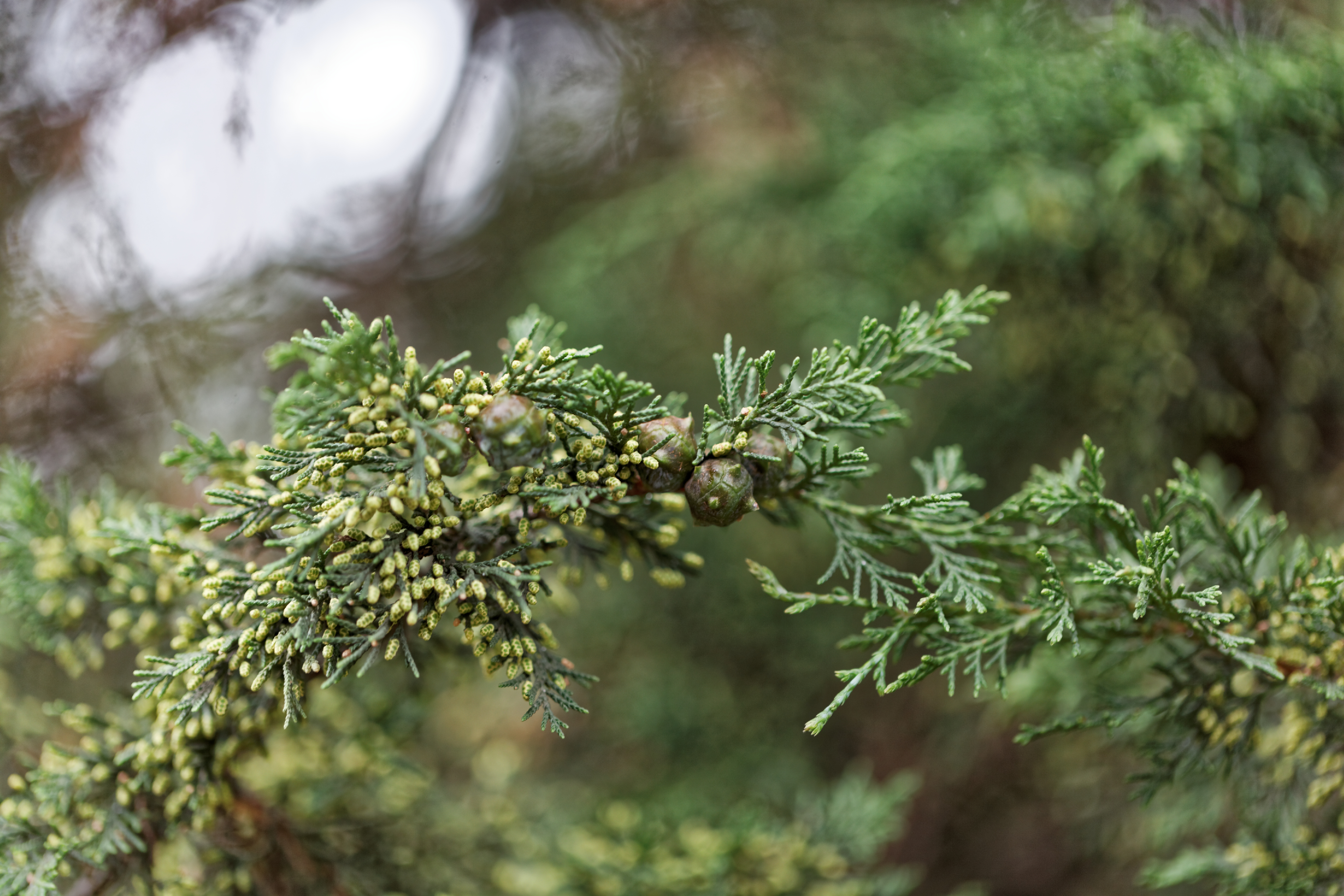African juniper
(Juniperus procera)

Description
Juniperus procera (known by the common English names African juniper, African pencil-cedar, East African juniper, East African-cedar, and Kenya-cedar) is a coniferous tree native to mountainous areas in Africa and the Arabian Peninsula. It is a characteristic tree of the Afromontane flora. Juniperus procera is a medium-sized tree reaching 20–25 m (rarely 40 m) tall, with a trunk up to 1.5–2 m diameter and a broadly conical to rounded or irregular crown. The leaves are of two forms, juvenile needle-like leaves 8–15 mm long on seedlings, and adult scale-leaves 0.5–3 mm long on older plants, arranged in decussate pairs or whorls of three. It is largely dioecious with separate male and female plants, but some individual plants produce both sexes. The cones are berry-like, 4–8 mm in diameter, blue-black with a whitish waxy bloom, and contain 2–5 seeds; they are mature in 12–18 months. The male cones are 3–5 mm long, and shed their pollen in early spring. Juniperus procera is native to the Arabian Peninsula (in Saudi Arabia and Yemen), and northeastern, eastern, west-central, and south tropical Africa (in the Democratic Republic of the Congo; the Republic of the Congo; Djibouti; Eritrea; Ethiopia; Kenya; Malawi; Mozambique; Somalia; Somaliland; Sudan; Tanzania; Uganda; Zambia; and Zimbabwe). It is the only juniper to occur south of the equator, and is thought to be a relatively recent colonist of Africa; the species shows very little of the variability associated with a long period of evolution. It is closely related to Juniperus excelsa from southwestern Asia, probably deriving from a common ancestor with that species in southwestern Asia. Junipers are coniferous trees and shrubs in the genus Juniperus of the cypress family Cupressaceae. Depending on taxonomic viewpoint, between 50 and 67 species of junipers are widely distributed throughout the Northern Hemisphere, from the Arctic, south to tropical Africa, throughout parts of western, central and southern Asia, east to eastern Tibet in the Old World, and in the mountains of Central America. The highest-known juniper forest occurs at an altitude of 4,900 metres (16,100 ft) in southeastern Tibet and the northern Himalayas, creating one of the highest tree lines on earth. Junipers vary in size and shape from tall trees, 20–40 metres (66–131 ft) tall, to columnar or low-spreading shrubs with long, trailing branches. They are evergreen with needle-like and/or scale-like leaves.
Taxonomic tree:







